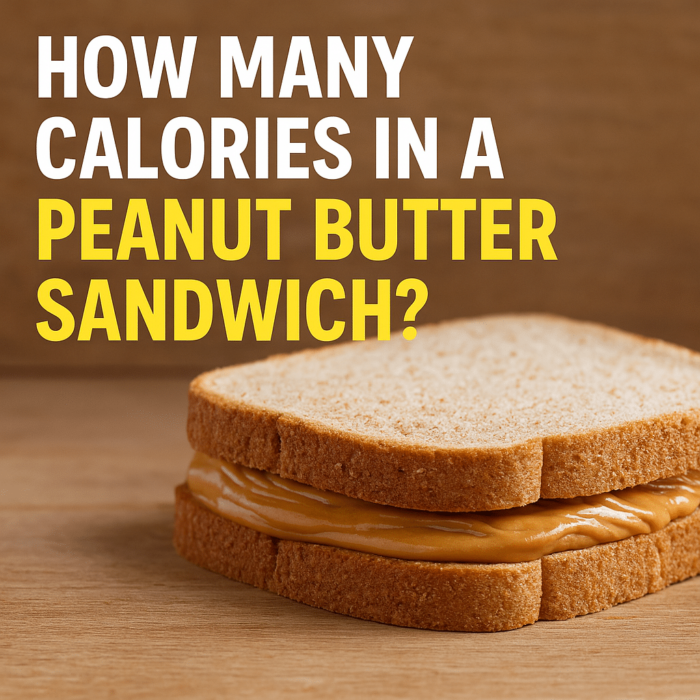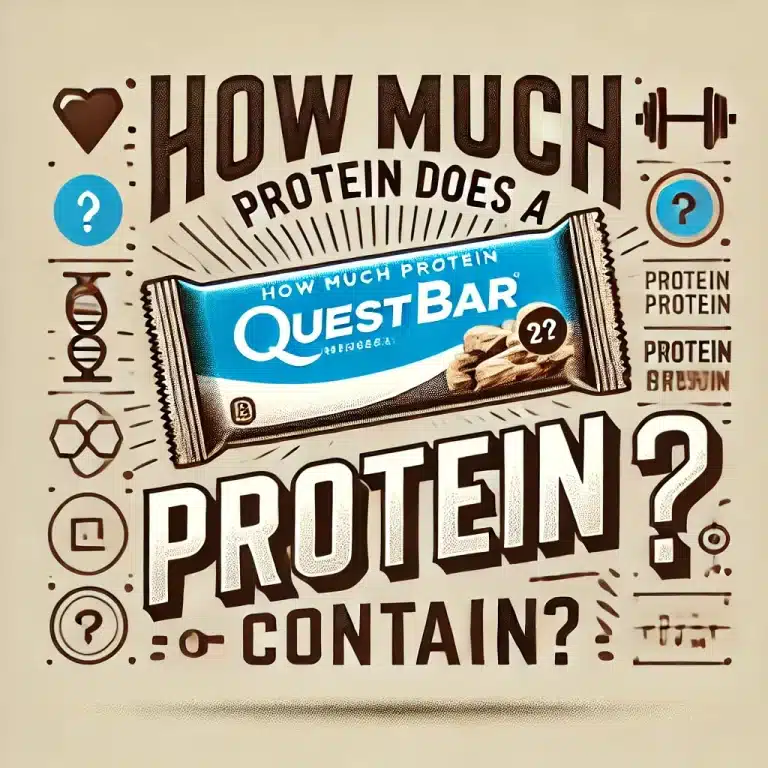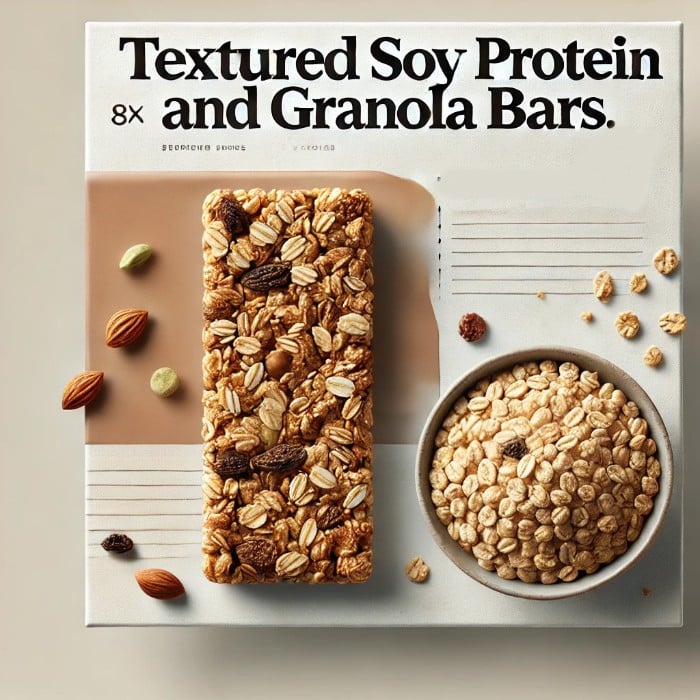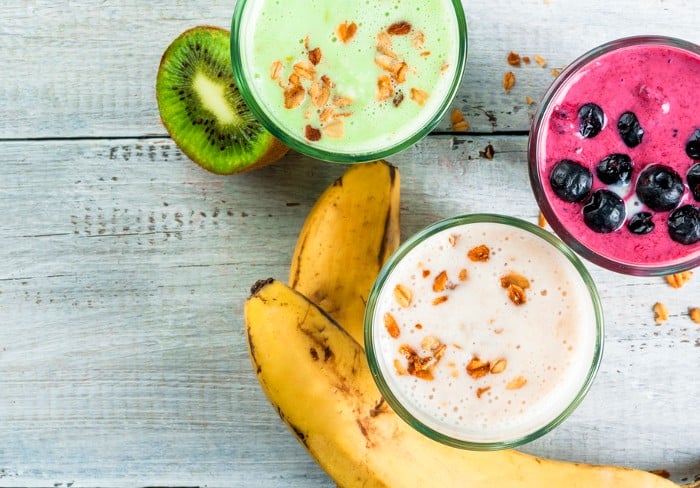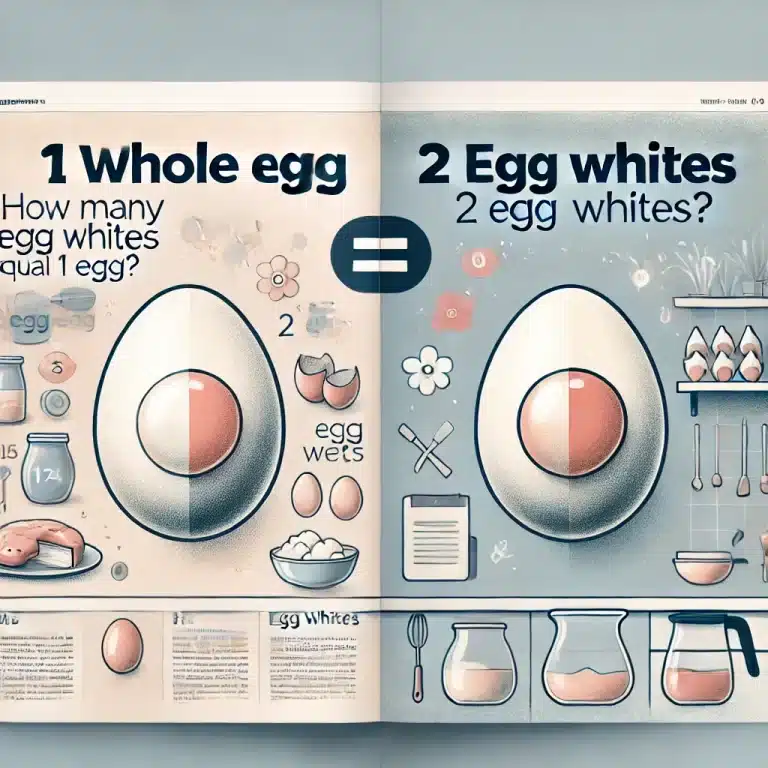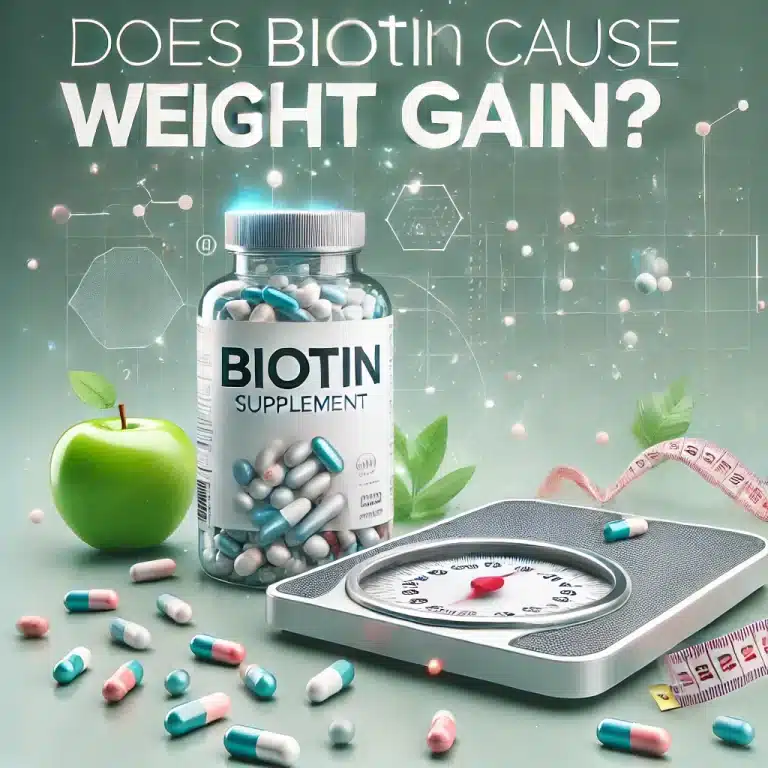How Many Calories in a Peanut Butter Sandwich? (Let’s Break It Down)
One other day I was looking into my cupboard, long past supper hour, trying to decide what to eat that wouldn’t take thirty minutes to prepare. I wanted not to nuke another frozen burrito and I wasn’t in the mood for cooking. I thus grabbed for the peanut butter, as most of us do at some time.
Two slices of bread. A generous (maybe overly generous) scoop of creamy peanut butter. Boom: a sandwich made with peanut butter.
Just basic. Meeting. Not too far from nostalgic too.
But the dietician’s voice in the rear of my head said, “How many calories are in this thing?” when I sat down and tasted that first mouthful.
This is one of those comfort dishes that seems benign; but, depending on how you prepare it, the calorie count can quickly go up.
Let us so dissect it today: how many calories are in a peanut butter sandwich? And let’s investigate how various breads, spreads, and toppings may totally alter the nutritional balance as we’re at it.
Since, to be honest, peanut butter sandwiches are not only for children. They feed late-night snackers, working folks, college students, and sportsmen.
Peanut Butter Sandwich 101: What Are We Measuring?
Before we dig into calorie numbers, we have to establish what we mean when we refer to “a peanut butter sandwich,” since no two sandwiches are made exactly.
Here’s the most fundamental form:
- Two slices of either white or whole-wheat bread
- Two teaspoons worth of peanut butter
That is exactly what I mean. Not jelly, not a banana, not a honey drizzling. Just the venerable PB on bread.
Of course, if you are anything like me, your sandwich might be a bit extra—maybe richer peanut butter, toasted bread, or perhaps a few extras added in. And those variations count in terms of calories as well.
Let us begin, though, with simplicity.
Calories in 2 Slices of Bread:
Bread is sly. Though depending on the brand and variety, it can vary greatly in terms of calories, carbohydrates, and even sugar; it seems innocuous.
Common bread varieties are broken out here:
- Standard sandwich-type white bread has about 70–80 calories per piece.
- A slice of whole wheat bread has roughly 80 to 100 calories.
- Sourdough: ~90–110 calories for every piece.
- Bread high in protein or sprouting grains: ~100–120 calories per slice
- Up to 150 calories per slice or more, thick-cut handcrafted bread
For two pieces of ordinary whole wheat bread, then, you are consuming 160 to 200 calories.
Calories in Peanut Butter (the Main Event):
Here, things may grow heavy. Though largely from fats (good ones, but still), peanut butter is calorie-dense.
Usually speaking, 2 tablespoons (32g) of peanut butter contains:
- Calories: ~180–210
- Fat: 16g (mostly unsaturated)
- Protein: 7–8g
- Carbs: 6–8g
And let’s face it—most of us evaluate our peanut butter not in terms of measure. Scoop out three or perhaps four tablespoons without thinking about it. If you are heavy-handed, that sandwich from PB by itself only runs from 200 to 400 calories.
Weigh your peanut butter on a food scale to get a more exact calorie count. It’s more dependable than guessing.
So… How Many Calories in a Basic Peanut Butter Sandwich?
For a basic edition, let’s do the arithmetic:
- Whole wheat bread (2 slices): ~180 calories
- Peanut butter (2 tbsp): ~190 calories
Total: ~370 calories
Isn’t it not horrible? It gives you fast energy, has a reasonable macro balance, and is filling. It’s perfect for a noon snack, post-workout, or breakfast.
Still, that is the basic form. And as you most likely would have anticipated, this sandwich narrative has more layers.
Popular Variations (And Their Calorie Impact):
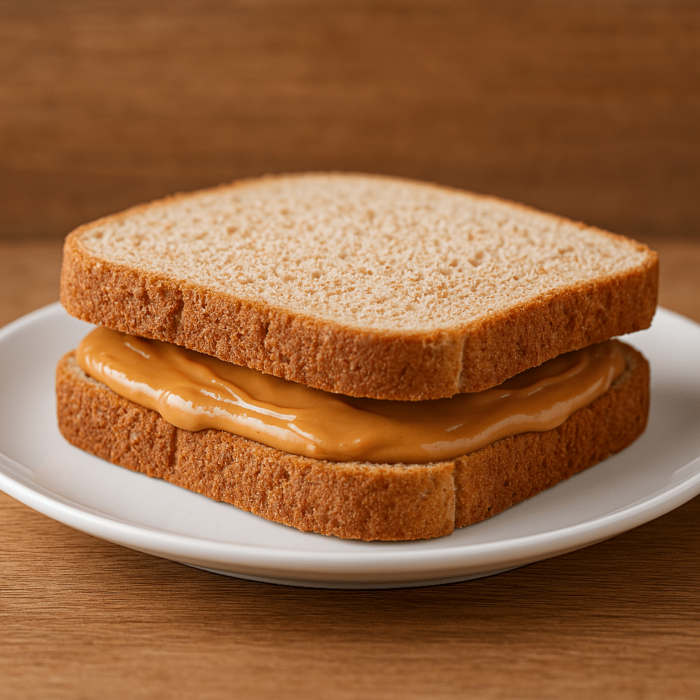
Let’s review some of the more typical peanut butter sandwich enhancements along with their calorie count impact.
1. Peanut Butter & Jelly (PB&J)
- Jelly (1 tbsp): ~50 calories
- New total: ~420 calories
2. Peanut Butter & Banana
- 1 medium banana: ~105 calories
- New total: ~475 calories
3. Peanut Butter & Honey
- Honey (1 tbsp): ~65 calories
- New total: ~435 calories
4. Thick Bread + Extra PB
- Artisan bread (2 slices): ~300 calories
- Peanut butter (3 tbsp): ~285 calories
- New total: ~585 calories
Calories in a Peanut Butter Sandwich for Weight Loss:
Here is when things get somewhat complex.
Peanut butter sandwiches can still help you lose weight; but, quantity control is really important. Keep to lower-calorie bread (70–80 cal per slice), then measure out your peanut butter—no more than two tablespoons. That will keep your sandwich between 350–375 calories, which would fit well on a diet designed for weight loss.
Bonus tip: Make use of powdered peanut butter—akin to PB2. Still delivering the taste, it contains 70–90% less calories per serving. Not the same texture, but if you’re cutting, fantastic.
Peanut Butter Sandwiches for Muscle Gain:
Conversely, peanut butter sandwiches are your friend if you’re bulking or attempting to build muscle. High in calories, simple to prepare, and heavy in good fats and protein. Add a banana; drizzle some honey; use thicker bread; now you have a 500–600 calorie muscle meal in minutes.
Just be sure you’re also eating enough protein all through the day. Though you should combine peanut butter with another source or a protein shake to meet your goals, it has some.
Is a Peanut Butter Sandwich Healthy?
ANow, ignoring calories—is a peanut butter sandwich even healthy?
Indeed, if you construct it cleverly. Here is the rationale:
- From peanuts, healthy fats help flatulence, hormone balance, and heart health.
- Whole-grain bread boasts complex carbohydrates and fiber.
- Protein counts support blood sugar regulation and muscle repair.
- It’s reasonably priced, portable, and enjoyable.
There is just one negative here. Calorie counts add up quickly; many commercial peanut butter include oils and sweeteners. Thus, if you consume them often, use high-fiber bread free of added sugar and go for natural peanut butter, just peanuts with salt.
Nutritional Breakdown (Sample)
| Component | Calories | Carbs | Protein | Fat |
|---|---|---|---|---|
| 2 slices wheat bread | 180 | 30g | 6g | 2g |
| 2 tbsp peanut butter | 190 | 7g | 8g | 16g |
| Total | 370 | 37g | 14g | 18g |
How to Lower the Calories (Without Losing the Flavor)
Demand the sandwich free of all the calories. Try using these techniques:
- Use 40 to 60-calorie thin-sliced bread.
- Try 45–60 calories powdered peanut butter reconstituted from two tablespoons.
- Replace jelly with sliced strawberries (fewer calories, higher fiber)
- Avoid butter or other spreads.
- To improve taste without adding more ingredients, toast it.
How Often Can I Eat Peanut Butter Sandwiches?
To be honest, As often as it makes sense for your total calorie and nutritional requirements.
You can enjoy a peanut butter sandwich every day and still meet your health objectives if you are hitting your macros, keeping within your daily intake, and selecting quality components.
All of it boils down to balance. Fuel exercises, cover a meal gap, or even more cleverly cut sweet cravings using them.
The History of the Peanut Butter Sandwich (A Quick Bite)
Unbelievably, for more than a century Americans have been fed peanut butter sandwiches. Originally unveiled at the 1904 World’s Fair, peanut butter itself gained popularity in the early 1900s. Millions of homes quickly and reasonably turned to peanut butter sandwiches by the time-sliced bread gained popularity in the 1920s.
Peanut butter was also included in troops’ diets during World War II, paired with jelly for calorie-dense food. It was reasonably affordable, shelf-stable, and packed a startling nutritional value.
These days, it’s not simply a snack, it’s an emblem. Athletes chew on them. Children like them. Busy parents rely on them. And whether you’re bringing it in a lunchbox or cooking it at midnight, it’s still among the most “anytime” dinners available.
Bread Matters: How Your Choice Impacts Calories & Nutrition
Let’s get a little further into bread as it’s about nutrition as much as calories.
- Typically poor in fiber, white bread is soft and comforting. It gets digested fast, which might raise blood sugar even though it is generally strengthened with iron and B vitamins.
- More fiber and minerals abound in whole wheat bread. It releases a more consistent energy and keeps you full longer.
- Like Ezekiel bread, sprouting grain breads are nutrient-dense, higher in protein and fiber, and typically have a reduced glycemic load. They also usually taste better, which can help regulate portions.
- Gluten-free loaves differ greatly. While some are filled with oils and carbohydrates, which increases their calories, others are calorie-light.
Always read labels, not only for calories but also for fiber count. Every slice of an excellent sandwich bread should have at least two to three grams of fiber.
Peanut Butter Types: Natural vs Processed vs Powdered
1. Natural Peanut Butter
- Ingredients: Peanuts (and maybe salt)
- Texture: Runny, needs stirring
- Calories: ~190 per 2 tbsp
- Benefit: No added sugar or hydrogenated oils
2. Commercial Peanut Butter (like Jif or Skippy)
- Ingredients: Peanuts, sugar, hydrogenated oils
- Texture: Smooth and shelf-stable
- Calories: ~200 per 2 tbsp
- Downside: Added sugars, processed fats
3. Powdered Peanut Butter
- Ingredients: Defatted peanut flour, salt, sugar
- Calories: ~45–60 per 2 tbsp (when reconstituted)
- Benefit: Lower calorie, great for weight loss or shakes
Peanut Butter Sandwich as a Pre-Workout or Post-Workout Snack
However, if timed and portioned right, a peanut butter sandwich can be a terrific pre- or post-workout choice that surprises many.
- Pre-workout (60–90 mins before):
- Get long-lasting energy from whole-grain bread.
- Limit fat (maybe substitute one tablespoon for two to prevent slowed-down digestion).
- Optional: For fast carbs, toss in a banana.
- Post-workout:
- Combine it with a protein shake to enter that recovery window.
- Add jelly, banana, or honey for increased glycemic load.
- Particularly for hard-bitten trainers, helps recover calories and muscle glycogen.
What to Pair With a Peanut Butter Sandwich
Alone, a PB sandwich is fantastic; here’s how to flesh it out into a whole, filling meal:
- With fruit, add for volume and fiber a side of apple slices, grapes, or berries.
- With a Protein Shake: To increase your protein intake particularly after work-out.
- Vegetables: Slabs of cucumbers or carrot sticks help offset the richness.
- Great for breakfast, Greek yogurt adds smoothness, probiotics, and protein.
Calories in a Peanut Butter Sandwich vs Other Common Snacks
| Snack | Calories | Protein | Fat | Carbs |
| Peanut Butter Sandwich | ~370 | 14g | 18g | 37g |
| Protein Bar | ~200–250 | 15–20g | 7g | 20g |
| Avocado Toast (1 slice) | ~250 | 5g | 18g | 15g |
| Bagel with Cream Cheese | ~400–450 | 10g | 20g | 45g |
| Turkey Sandwich | ~350–450 | 25g | 10g | 35g |
FAQs: Quick Answers About Peanut Butter Sandwich Calories
How many calories are in a peanut butter sandwich with jelly?
About 420–450 calories, depending on the type and amount of jelly used.
Is peanut butter good for a diet?
Yes, in moderation. It’s high in healthy fats and calorie-dense, so portion size matters.
How many calories are in a peanut butter and banana sandwich?
Around 475–500 calories, depending on the size of the banana and bread.
Can I eat a peanut butter sandwich every day?
Absolutely, as long as it fits your daily calorie and nutrient needs.
What’s the lowest-calorie way to make a PB sandwich?
Use light bread (60 calories per slice), 1 tbsp peanut butter, and no extras, the total is 220–250 calories.
Final Thoughts: How Many Calories in a Peanut Butter Sandwich (And Why It Still Slaps)
So, how many calories are in a peanut butter sandwich? The solution is, it depends. The straightforward version is as follows, though:
- Basic PB sandwich (2 slices whole wheat + 2 tbsp PB): ~370–400 calories
- Add jelly, banana, or honey: 450–600+ calories
- High-calorie versions (thick bread, extra PB): Easily 600–700+
Stuck on the lower end, light bread, measured PB, avoid the extras if you are attempting to lose weight. If you require high-energy meals or are bulking, go large and appreciate the flexibility.
Whatever your aim, a peanut butter sandwich may be a surprisingly strong, filling, and healthful addition to your diet. As long as you keep from getting carried away with the scooping, it’s quick, reasonably priced, and loaded with nutrients.
And let’s be honest, sometimes a late-night PB sandwich is the only thing that appeals.
